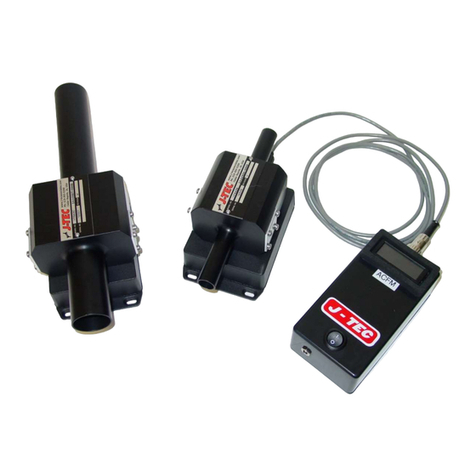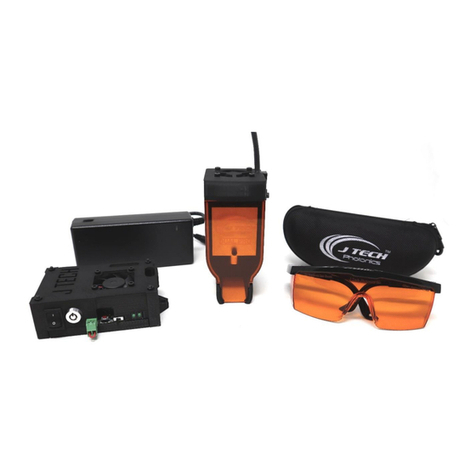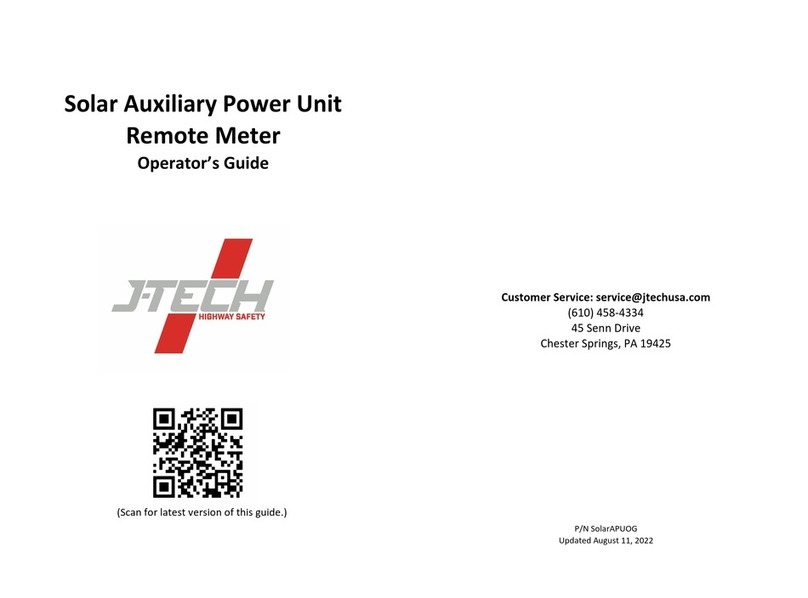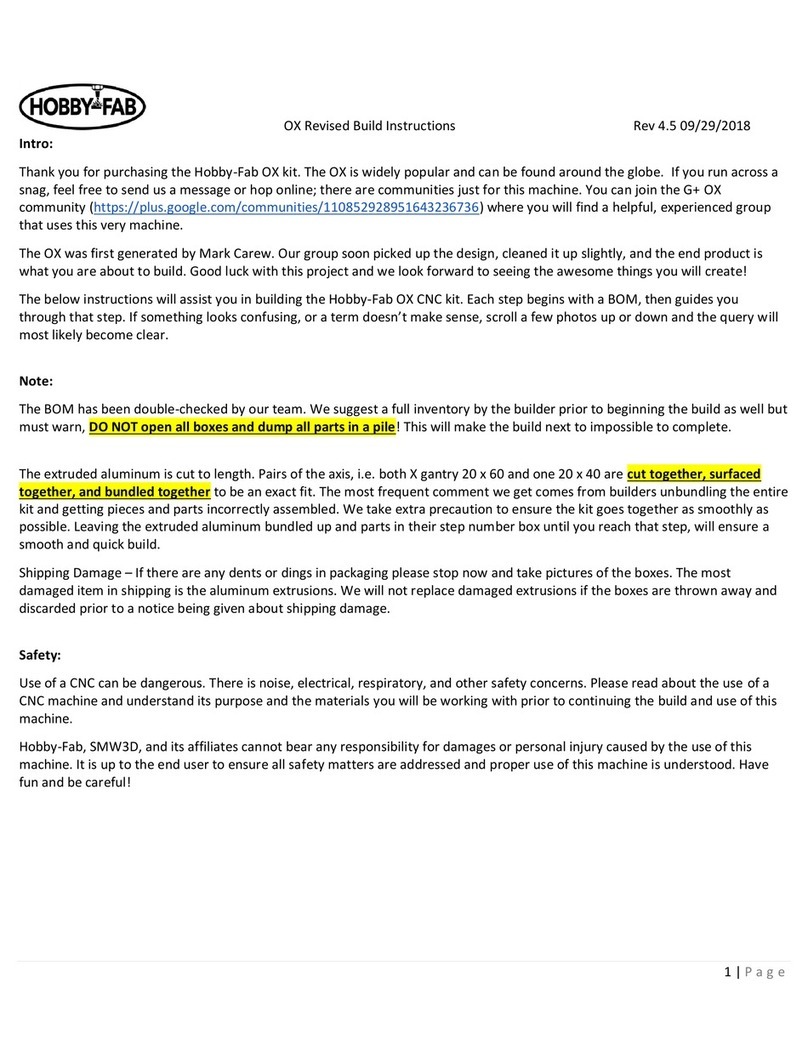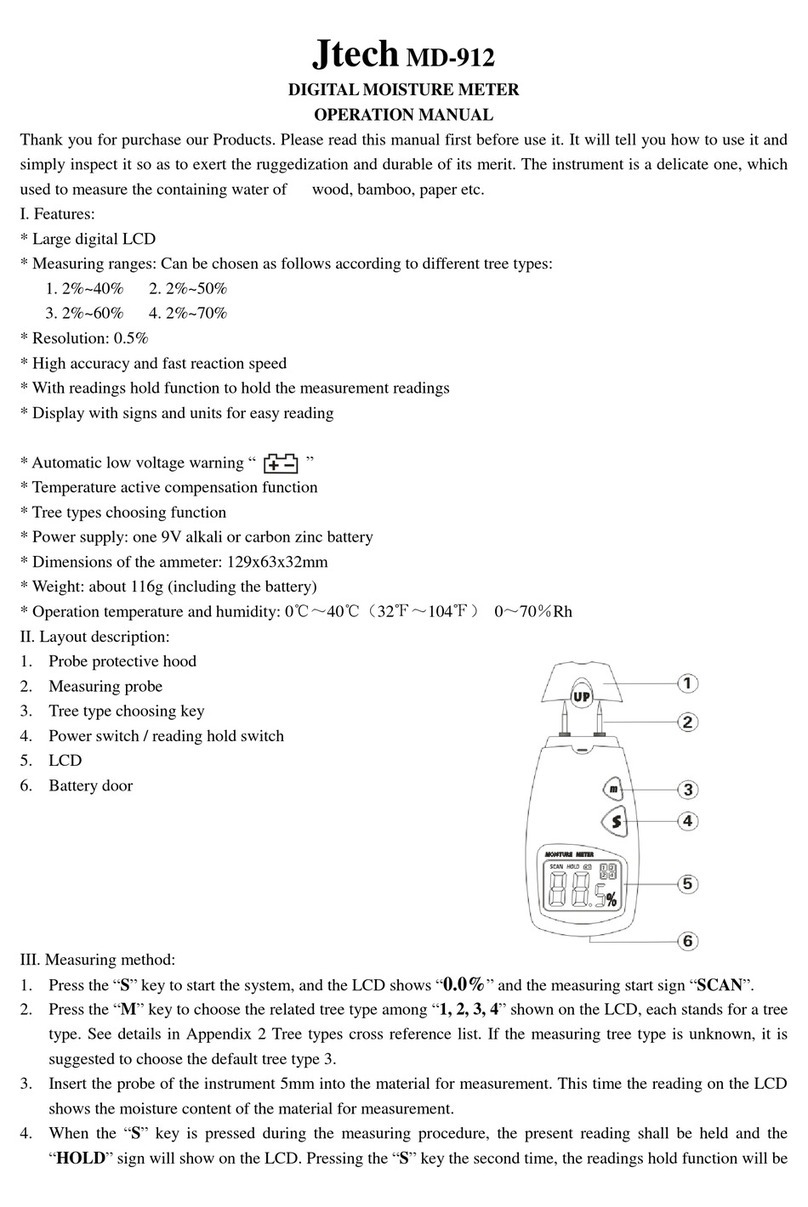
SAFETY
SAFETY PRECAUTIONS
Improper installation, operation or removal of your
LaneBlade® could cause personal injury, and/or
equipment and property damage. Read and
understand the warning label, the In-Cab Safety
Sheet, and this Owner’s Manual before installing,
operating, servicing, or making adjustments to
your LaneBlade®.
SAFETY MESSAGES
The instructions in this Owner’s
Manual provide the necessary
steps for the physical operation of the
LaneBlade®. J-Tech highly encourages you to
consult your own company’s/agency’s
recommended operation procedures for this
device which will take into account your
particular operating environment.
Improper practices, carelessness,
or ignoring the warnings in this
Owner’s Manual can cause vehicle accidents, road
damage, or personal injury or death.
Operator must comply with all
Federal, State, or any other
applicable governing oversight requirements.
Read owner’s manual before
operating or servicing LaneBlade®.
Any change or modification to the
LaneBlade® system without J-
Tech’s previous knowledge and written approval
risks personal injury or death, and voids any
warranties.
Lower the LaneBlade® when
vehicle is parked. Temperature
could change hydraulic pressure, causing the
LaneBlade® to drop unexpectedly or causing
damage to the hydraulic components. Failure to
lower LaneBlade® when parked can result in
serious personal injury.
Do not make contact with debris
while traveling at more than
20mph.
Do not push debris while traveling
more than 20mph.
Do not exceed 20mph with the
LaneBlade® deployed.
Do not attempt to push debris
weighing over 150lbs.
The LaneBlade® is designed for
pushing debris off the road which,
in some cases, may contain snow and/or gravel. It
is not intended to be used as a snowplow or
grader moving excess amounts of snow, dirt, or
gravel.
Ensure the vehicle is equipped
with a type “ABC” fire extinguisher
and that all operators are trained on the proper
use of a fire extinguisher.
Vehicle exhaust contains deadly
carbon monoxide(CO) gas.
Breathing this gas, even in low concentrations,
could cause death. Never operate a vehicle in an
enclosed area without venting exhaust to the
outside.
Ensure that all operators are
trained and authorized by the
owner to operate highway maintenance vehicles
before operating the LaneBlade®.
Always check area around vehicle
for bystanders and equipment
before moving vehicle.
Always support the LaneBlade®
with appropriate jack stands when
performing maintenance, pre-use inspections,
post-use inspections, or service.
3












